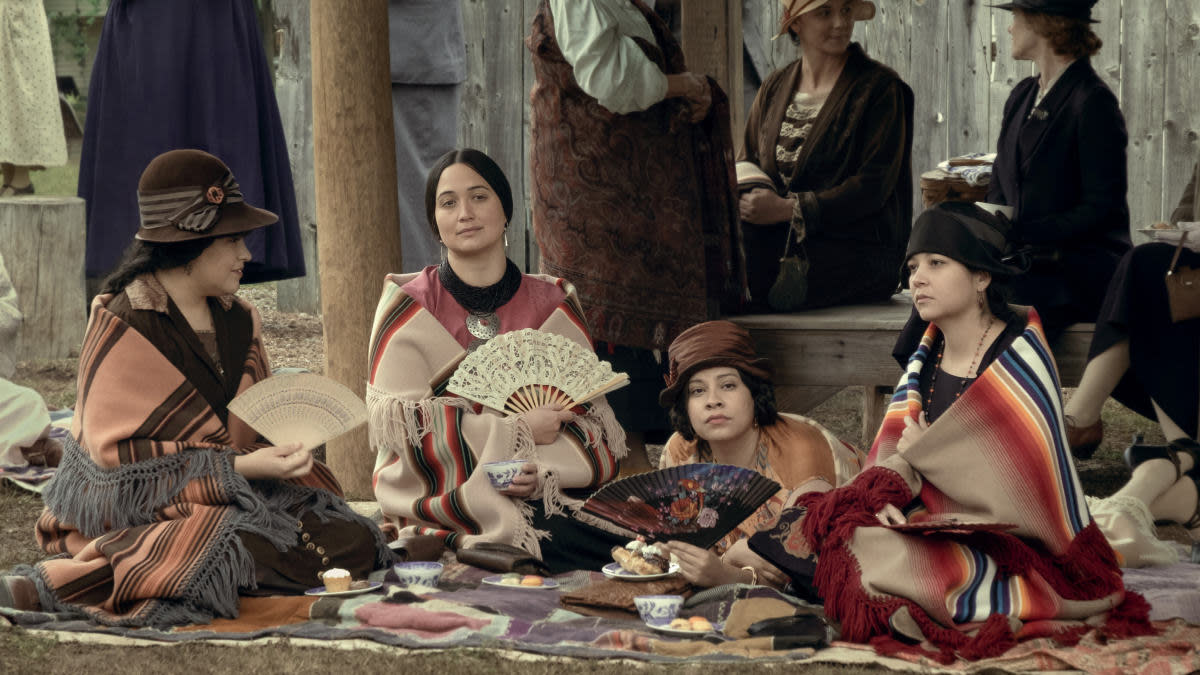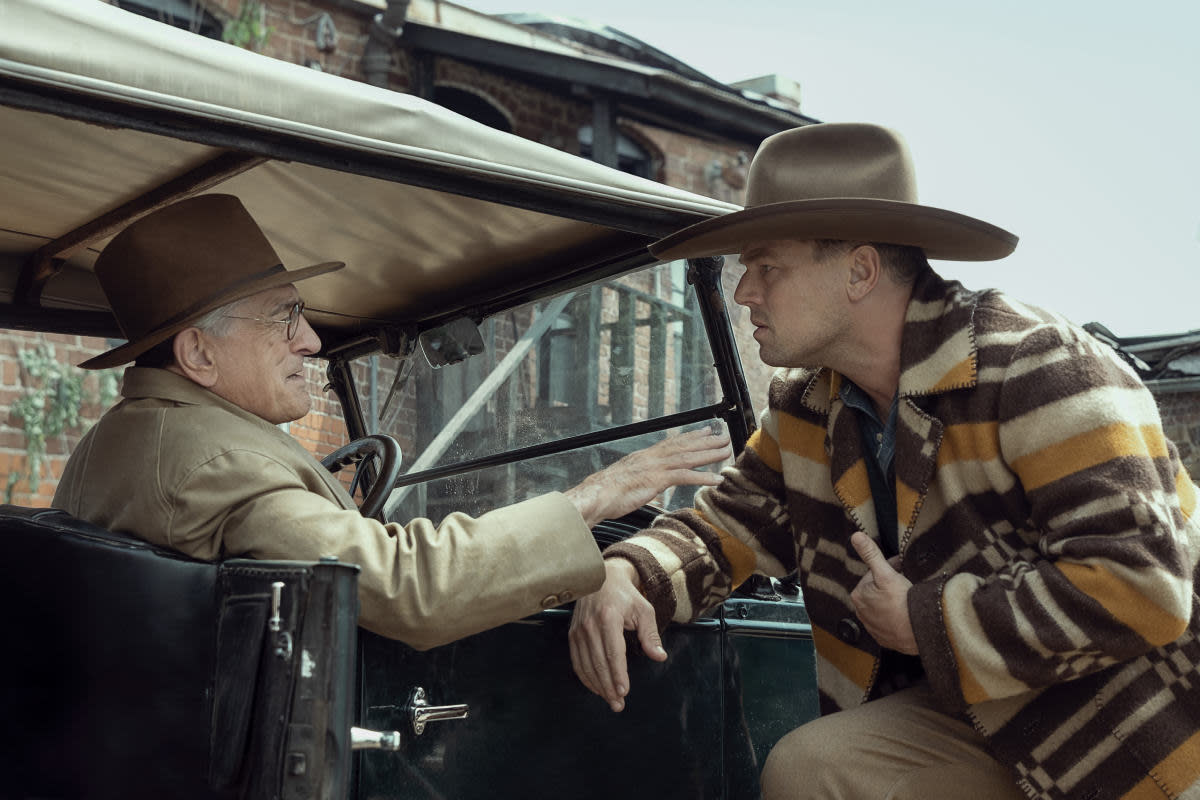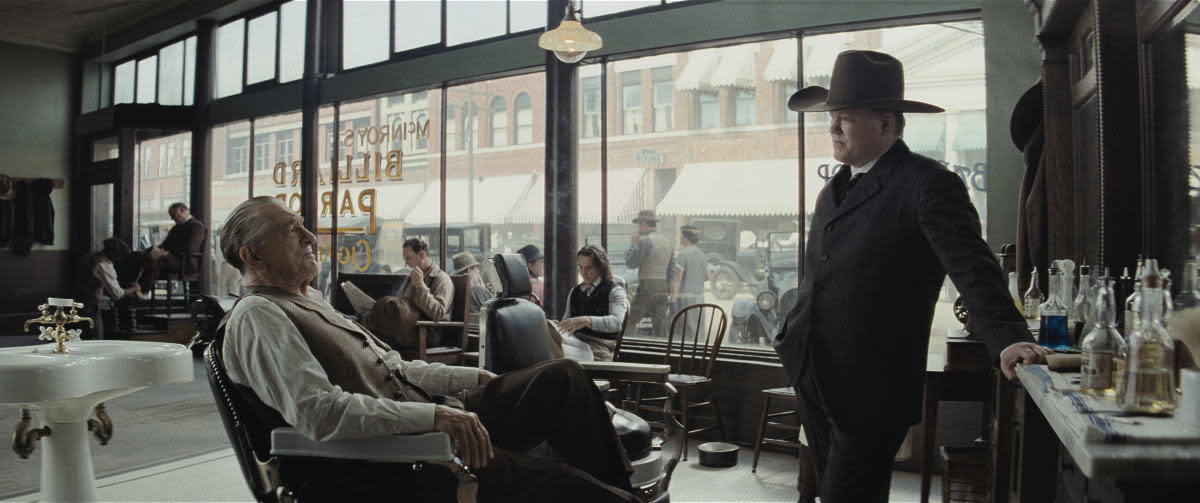Everyone Is Delivering Career Best Work in 'Killers of the Flower Moon'

Killers of the Flower Moon Review
When you're at the point in your career that legendary director Martin Scorsese is, 41 feature films deep, surprising audiences and outdoing yourself can be a near impossible feat. How does one top Taxi Driver, Goodfellas and The Departed? The same issue faces frequent Scorsese collaborators and Oscar-winning actors Leonardo DiCaprio and Robert De Niro. And yet in Killers of the Flower Moon, Marty's sixth collab with Leo and 10th with Bob, all three are turning in top-tier efforts.
Killers of the Flower Moon is based on the massively popular true-crime book by journalist David Grann, who documents the then fledgling FBI's investigation into the suspicious deaths of dozens of members of the Osage Nation in 1920s Oklahoma. Unlike the book, Scorsese's film is told largely from the perspective of Mollie Burkhart, an Osage woman played by Lily Gladstone, and her white husband, Ernest (DiCaprio). The pivot from an FBI-led mystery thriller to a methodical horror film focused on the Osage was not one Scorsese originally planned to make (the idea came from direct talks with the Osage Nation). But the reconfigured structure moves the film from a genre Scorsese is well-versed in to something less familiar, and Killers is all the fresher (and better) for it.
Related: The Best Movies of 2023 So Far

Applet TV+
With a 3.5-hour runtime, Scorsese has plenty of room to set the stage, and so he begins with several sequences (a funeral, an oil-slick dance, a silent-film history) to paint the richness of the Osage life before injecting the toxic pairing of Ernest and his uncle William King Hale (De Niro). While Ernest, a yellow-toothed, mealy-mouthed simpleton back from the war, arrives in Oklahoma harmless enough and asking for a chauffeur job, it quickly becomes apparent that the wily Hale is on a mission to swindle the Osage out of their fortunes (they had gotten rich off their land's oil).
When Ernest meets Mollie on his taxi-driving day job and becomes smitten with her stoic confidence, Hale is thrilled to marry his nephew into a "full blood estate," moving one step closer to claims on their cash. What slowly unfurls over the next hours is a twisted And Then There Were None-esque plot where Mollie's three sisters and mother mysteriously die one by one ("Five little Indian girls found oil in the floor; an evil man brought poison and then there were four"). Hale draws Ernest into his murderous plot, convincing him to not only off a snooping detective, but also bomb his sister-in-law's house. And that's before he begins poisoning his own wife.
Meanwhile, Mollie is left with mounting sorrow and claustrophobic dread as her own death looms, her killer lost in the sea of white, money-grubbing faces that crowd the Osage. Rather than the whodunit of the Grann book, the film's audience is confronted with a different mystery: Will someone stop Ernest before he's able to murder his wife via poisoned insulin shots? It's only in the film's third hour, when Mollie is hunched over a vomit bowl in bed, that the FBI (led by Jesse Plemons) start knocking on doors.
Related: The Complete List of 2023 Oscar Winners

Apple TV+
Many, including members of the Osage Nation, have rightfully asked why Scorsese, a white man from Queens, needed to be the storyteller here and remain conflicted about the project. Others, who also include members of the Osage Nation, have praised Scorsese for working with so many members of the community.
Even with the sticky question of who should tell which stories floating around, the film's reconfigured structure not only elevates the filmmaking, but re-centers the Osage people in a story that is ultimately about them. It takes the leading FBI operative performance in the book and passes that screen time to Gladstone and DiCaprio. Gladstone, who has most notably appeared in Kelly Reichardt's films Certain Women and First Cow, is a scene-stealing revelation. Her understated performance, built delicately on smirks and glances to start, is finely calibrated as her sharpness is methodically dulled over time under the weight of tragedy, fear and sickness. In a cinematic pantheon of drenched nightgowns, limp wrists and bloody hankies, Gladstone is delivering one of the most visceral "sick in bed" performances committed to screen.
At the same time, her foil, DiCaprio is concocting the perfect alchemy of what he does best. The gruff Revenant exterior mixed with pure evil of Django Unchained and just a dash of his charismatic charm sprinkled in. As with Gladstone, he's given 3.5 hours to showcase that range, transitioning from dimwitted gambler to a greedy, morally conflicted husband with an Este Haim grimace dragging down his face.
De Niro, who has the supporting role, is a giddy charlatan and manipulative narcissist in an almost Patrick Bateman-sort of way. Plus, one scene of him spanking DiCaprio with a paddle in a Masonic Lodge will surely live on as a meme for years. The far reaching supporting cast, including many Native American actors, are all superb with the exception of Brendan Frasier, who feels a little dopey and miscast as a smarmy defense attorney late in the film.

Apple TV+
And while there are quibbles one could make, such as why the inheritance logistics aren't better explained (WTF is a headright?) or why Mollie would be attracted to Ernest in the first place (some less imbecilic blue-eyed man has to exist in Oklahoma, right?), those are easily forgiven. The 3.5-hour runtime feels more than justified by the quality of content and attentive character work.
The filmmaking, including gorgeous black-and-white old timey photographs, an impressive explosion sequence and production design (those blankets!) that should leave both Barbie and Oppenheimer quaking, is best-in-class. Scorsese packs in not only memorable scenes like one on a crowded train platform that oozes violent dread and will haunt commuters for years, but also ones of poignant reverence to the Osage and their traditions. One in which Mollie's grandmother passes over into the afterlife is particularly stunning.
Killers of the Flower Moon could have easily been a bad movie, or perhaps worse, a boring one, but the final product is a testament to the cast and crew's thought and attention-to-detail. It's a well-crafted legacy to its creators and a monument to the Osage people and their resilience.
Grade: A-
Next, 16 Academy Award Contenders for 2024 That You Can Already Watch
